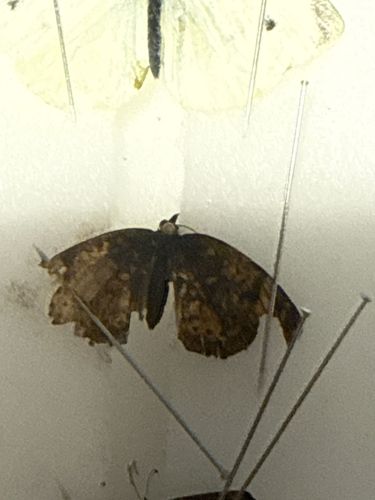Moth
Scientific Name: Unidentifiable beyond order (Lepidoptera)
Order & Family: Lepidoptera (Moths and Butterflies), Family Unidentifiable from image
Size: Highly variable, typically from 0.4 inches (1 cm) to over 12 inches (30 cm) wingspan, depending on the species.

Natural Habitat
Widely diverse, depending on the specific moth species. Can be found in forests, grasslands, deserts, urban areas, and more.
Diet & Feeding
Adult moths often feed on nectar, fruit juices, tree sap, or are non-feeding. Larvae (caterpillars) are typically herbivorous, feeding on plant leaves, stems, roots, or fruits. Some species are predatory or detritivorous.
Behavior Patterns
Mostly nocturnal, attracted to light. Exhibit various camouflage strategies. Larvae undergo complete metamorphosis. Some species migrate long distances.
Risks & Benefits
Risks: Some moth larvae are agricultural pests (e.g., armyworms, cutworms). Some species' hairs can cause skin irritation. Benefits: Important pollinators, food source for various animals (bats, birds), decomposers, indicators of environmental health.
Identified on: 9/21/2025